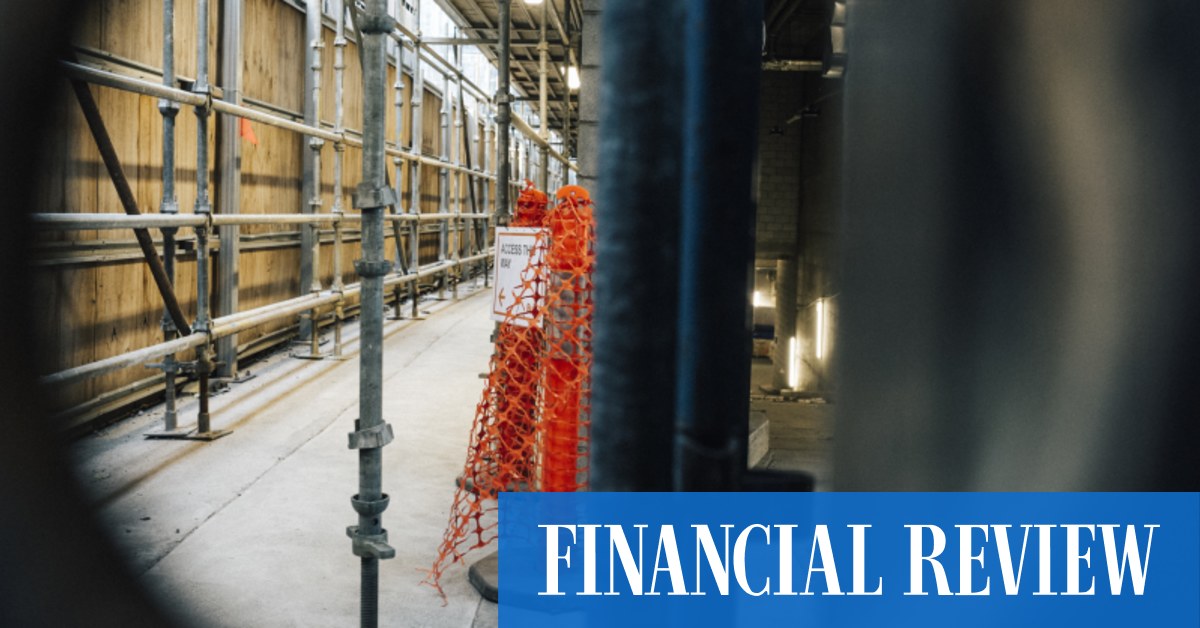
Building industry insolvencies rose to 28 per cent of total insolvencies at the end of last year, from 17 per cent in March 2020.
Industry troubles
Earlytrade lets subcontractors, who often operate on 30-day terms, negotiate faster payment in exchange for a discount on their total invoice. The company said subcontractor registrations for early payment leapt to an average of 371 a month in the last three months of last year, from 76 a month in the September quarter.
However, Earlytrade is not the first company to warn of the troubles facing the construction industry from the expected slew of infrastructure projects. Peak forecasting body ACIF warned of surging prices and shortages last year, as an estimated $32 billion was poured into housing and infrastructure over the past four years.
The current situation did not guarantee a string of company failures, Mr Saxelby said.
“The pipeline presents a huge opportunity but slower-burning and lingering COVID-19, input cost and supply chain pressures will create an ultra-competitive environment, especially when it comes to attracting and retaining quality trades on projects,” he said.
Australian Bureau of Statistics figures last week showed the value of the country’s select wood imports reached their highest level on record in the December quarter. The Housing Industry Association said it was a sign that the global supply chain was helping ease shortages of the mostly domestically produced material.
“Timber is predominantly produced domestically but excess demand, such as in a boom year like 2022, is largely sourced from overseas markets,” HIA economist Tom Devitt said.
Unforseen risks
But a separate report shows that the booming pipeline of work and dependence on global supply chains opens up construction businesses to a wider range of risks than many recognise, and to which they could be inadvertently exposed without knowing.
Along with the well-understood risks of time, cost and quality, the growing complexity of supply chains – which meant companies often dealt with other parties on a transactional basis according to a project – left them increasingly exposed just as expectations around corporate behaviour legacy were rising, the Building in the Dark report by procurement platform Felix showed.
“It’s been a sleeping giant, an industry built on a handshake for 50 years and project managers had black book of subbies they’d use on a project,” Felix chief executive Mike Davis said. “And that’s changing.”
The survey of 150 people across Australia and New Zealand found that almost four-fifths (79 per cent) of respondents believed their third parties were not always fully aware of, or understood, the risks that they were responsible for managing under their contracts.
No party could confirm any verification or follow-up audits.
— Building in the Dark report
More than half (56 per cent) believed their organisation had unknowingly engaged an entity red-flagged by another area of the organisation.
One area of concern is exposure to modern slavery. Although 62 per cent of respondents said their organisation had a clear understanding of what modern slavery could look like within their supply chain and how to address it, many construction-related companies were probably falling “well short” of recommendations to tackle the problem, the report said.
“The primary means of policing modern slavery for many companies merely involves asking third parties for their modern slavery policies or referencing policies related to modern slavery obligations in their contracts,” the report said.
“No party could confirm any verification or follow-up audits. The ability to look beyond your jurisdiction was generally considered as not feasible by main or head contractors.”
Report author Leah Singer said the growing pipeline of work increased the risks over which companies would increasingly be held accountable.
“You’ve already got an industry where many organisations aren’t as on top of their risk management as well as they need to be, and you add on top of these extra demands,” she said.
“That exacerbates the issue of risk management.”








